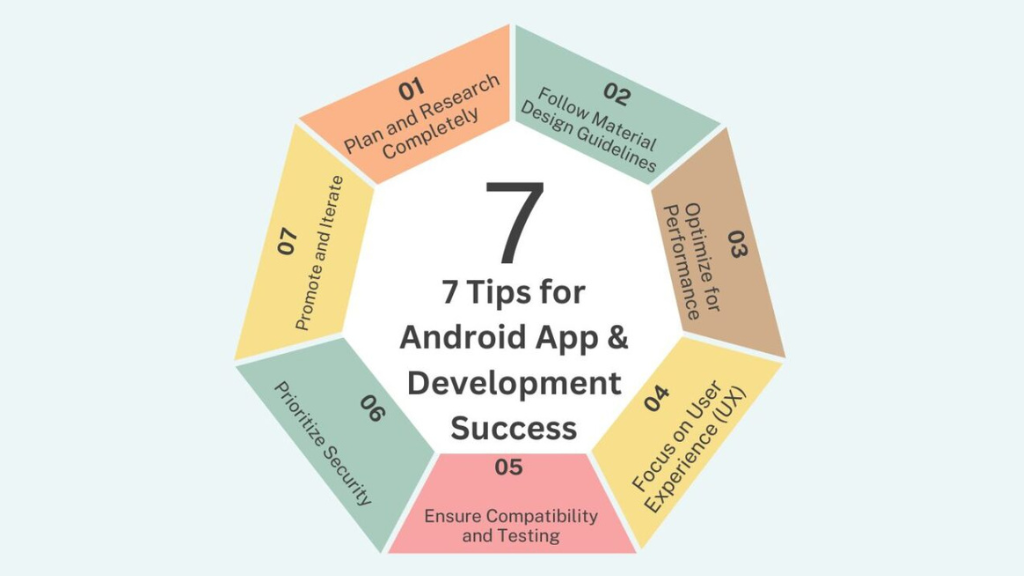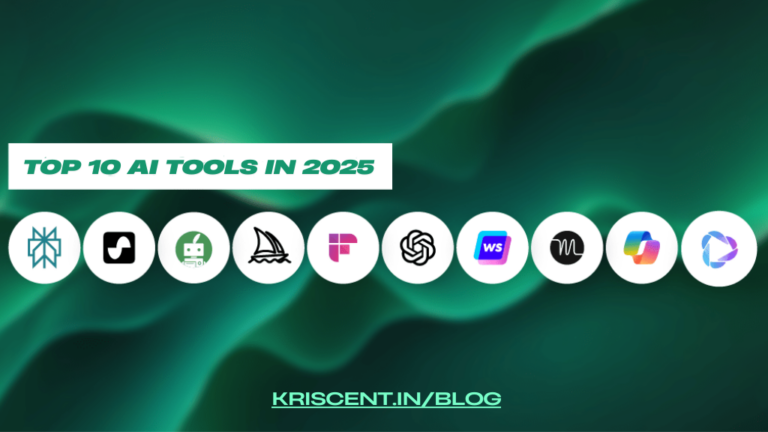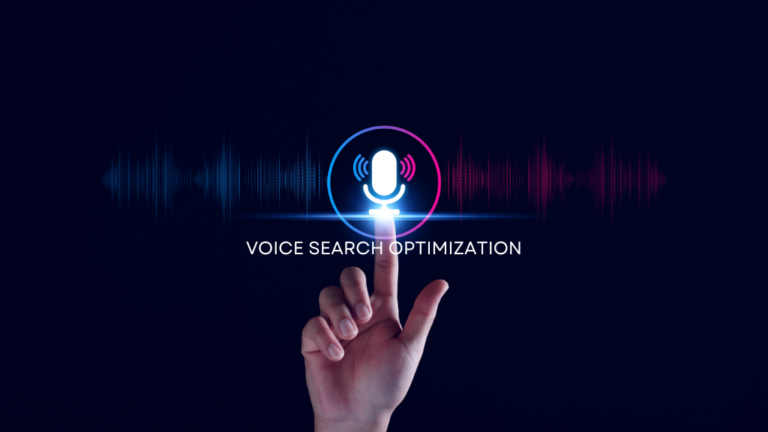7 Tips for Android App Development Success
- Plan and Research Completely
- Follow Material Design Guidelines
- Optimize for Performance
- Focus on User Experience (UX)
- Ensure Compatibility and Testing
- Prioritize Security
- Promote and Iterate
Here are 7 Tips for Android App & Development Success
Plan and Research Completely
Describe the App’s Concept: Clearly state the goals and aims of your application. Find out your target audience’s needs, preferences, and areas of concern. For Android App & Development Success you have to create concepts and attributes that relate to the issues that the audience you are targeting is experiencing.
Market Analysis: Examine the competitors in the app store that are related to the category of your app. Look for apps that are popular in your niche and research their features, reviews, and business models. Search for market possibilities or gaps that your app can fill.
Planning your resources and budget: Calculate the price for creating an app, taking into account fees for the employing developers and purchasing software, developing tools, and marketing. Tips for Android App & Development Success. Find out the tools and knowledge required for every development stage and including design, coding, testing, and deployment. Use resources wisely for smooth development and on-time delivery.
Follow Material Design Guidelines
Consistency: Follow Material Design’s guidelines for layout, typography, and color scheme application across the board. By doing this, consumers are guaranteed a consistent experience and can quickly and clearly move between parts.
Responsive Design: Implement responsive design principles to ensure that the system functions seamlessly across various devices and screen sizes. Material Design offers guidelines for responsive layouts and adaptive components to maintain usability across platforms.
UI Components: Utilize Material Design’s pre-defined UI components such as buttons, cards, menus, and dialogs. These components not only provide a familiar interface for users but also promote efficiency in development by leveraging existing design patterns.
Optimize for Performance
Code Efficiency and Optimization: Write clean, efficient code to minimize processing time and resource usage. Optimize algorithms and data structures to reduce computational overhead, especially for tasks such as data retrieval, processing, and calculations.
Scalability and Load Balancing: Design the system architecture with scalability in mind to accommodate increasing user loads and data volumes over time. Utilize load balancing techniques to distribute incoming traffic evenly across multiple servers or resources, preventing any single component from becoming a bottleneck.
Optimized Database Operations: Optimize database queries and indexing to improve data retrieval and processing speeds. Use database caching mechanisms to reduce the frequency of querying the database for frequently accessed data, enhancing overall system performance.
Focus on User Experience (UX)
User-Centric Design: Conduct user research to understand the needs, preferences, and pain points of the system’s target audience, including loan officers, claims adjusters, and customers. Use personas and user journeys to empathize with users and design interfaces that cater to their specific tasks and workflows. Employer user-centered design principles to create intuitive and easy-to-navigate interfaces, minimizing the learning curve and cognitive load for users.
Understanding User Needs: Determining the goals, preferences, and pain points of the target audience is the first step towards putting user experience front and center. This entails carrying out in-depth user research, which might comprise usability testing, questionnaires, interviews, and behavior analysis of users. Designers may produce goods and services that genuinely connect with their target market by developing empathy for people and obtaining insights into their motives.
Ensure Compatibility and Testing
Cross-Platform Compatibility: Test the system across multiple devices, operating systems, and web browsers to ensure compatibility and consistent functionality. Implement responsive design principles to optimize the user experience across various screen sizes and resolutions, including PCs and Notebooks, tablets, and smartphones.
Integration Testing: Conduct integration testing to verify seamless communication and interoperability between different modules, components, and third-party integrations within the system. Test API endpoints, data exchanges, and communication protocols to ensure smooth data flow and accurate information exchange between the system and external services or databases.
Browser Compatibility: Test the system on popular web browsers such as Google Chrome, Mozilla Firefox, Microsoft Edge, Safari, and Opera to identify and address any browser-specific issues or discrepancies in rendering and functionality.Ensure compatibility with older browser versions, particularly if the system is intended to be used in environments where users may have limited control over their browser choices.
Prioritize Security
Data Encryption: Utilize strong encryption algorithms to safeguard sensitive data both in transit and at rest. This includes encrypting data stored in databases, as well as data transmitted over networks using protocols like SSL/TLS. These are the tips for Android App & Development Success.
Access Control: Implement robust access control mechanisms to ensure that only authorized personnel can access sensitive information or perform specific actions within the system. This involves role-based access control (RBAC), multi-factor authentication (MFA), and least privilege principles.
Regular Security Audits: Conduct regular security audits and vulnerability assessments to identify potential weaknesses or gaps in the system’s defenses. This may involve both automated scanning tools and manual penetration testing by security experts.
Promote and Iterate
User Feedback Collection: Establish channels for collecting feedback from system users, including loan officers, claims adjusters, and customers. This can include surveys, feedback forms, and direct user interviews. Actively solicit feedback on the system’s usability, performance, and features to identify areas for improvement and prioritize development efforts accordingly.
Iterative Development Process: Adopt an iterative development approach, such as Agile or Scrum, to incrementally enhance the system’s capabilities based on user feedback and changing requirements. Break down development tasks into smaller, manageable iterations or sprints, allowing for regular releases and quick iterations based on user feedback and evolving business needs.
Continuous Improvement: Foster a culture of continuous improvement within the development team by encouraging collaboration, knowledge sharing, and experimentation. Regularly assess and evaluate the system’s performance, usability, and effectiveness, and identify opportunities for enhancement through analytics, user testing, and stakeholder feedback.
These all are the 7 Tips for Android App & Development Success.
So, whether you’re a seasoned developer or just starting out, incorporate these strategies into your workflow and watch your projects thrive.
Now, it’s time to put these tips into action. learn more and start implementing them in your next Android app project and see the difference they make.
Thank you for reading my blog If you want to learn. You may visit our website .




%20(1)%201.webp?updatedAt=1725274383969)









If you need Reliable Android App Development services, you can visit https://www.aress.com/android-app-development.php
[…] you for reading our blog and if you want to read about 7 Tips for Android App & Development Success then read this […]